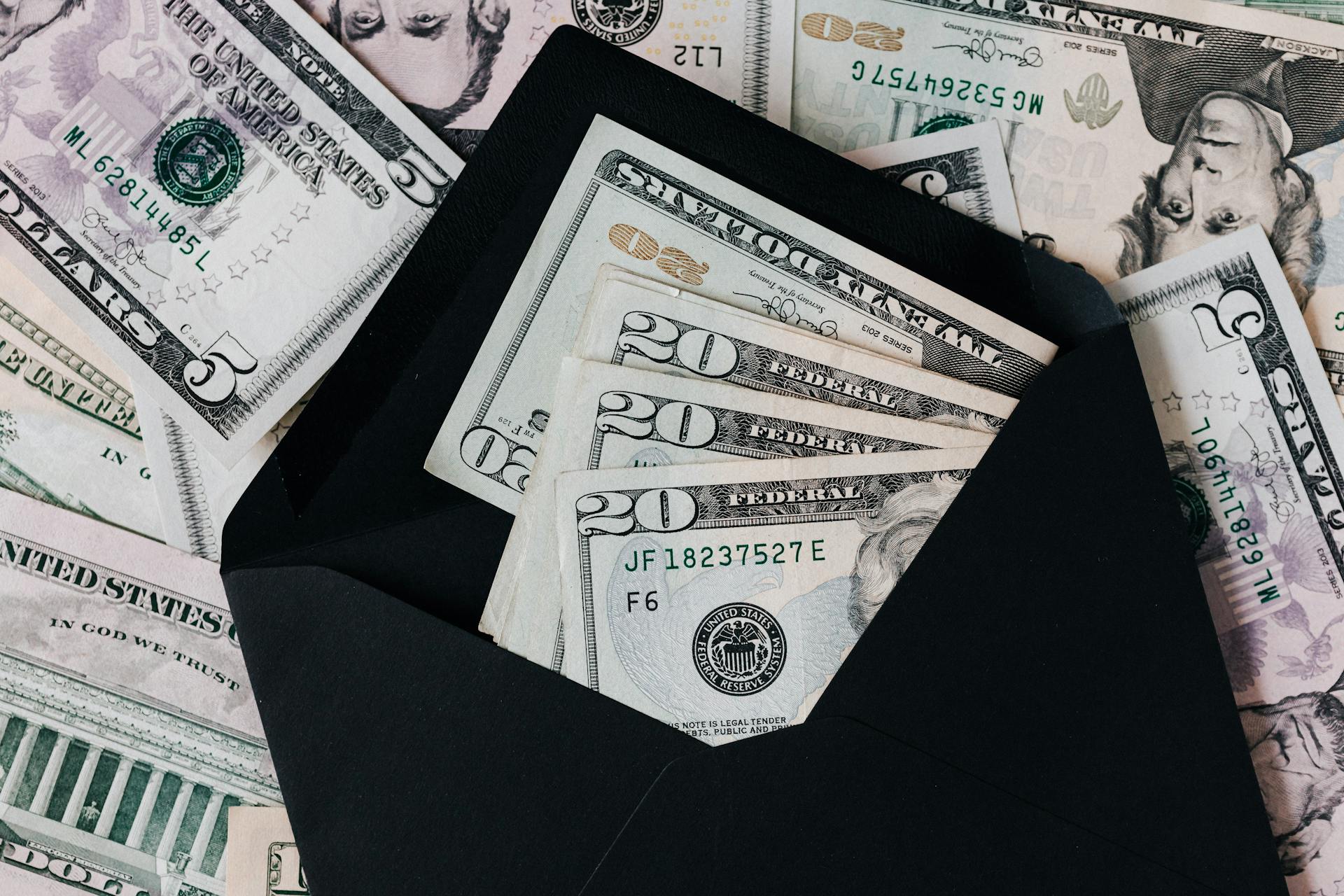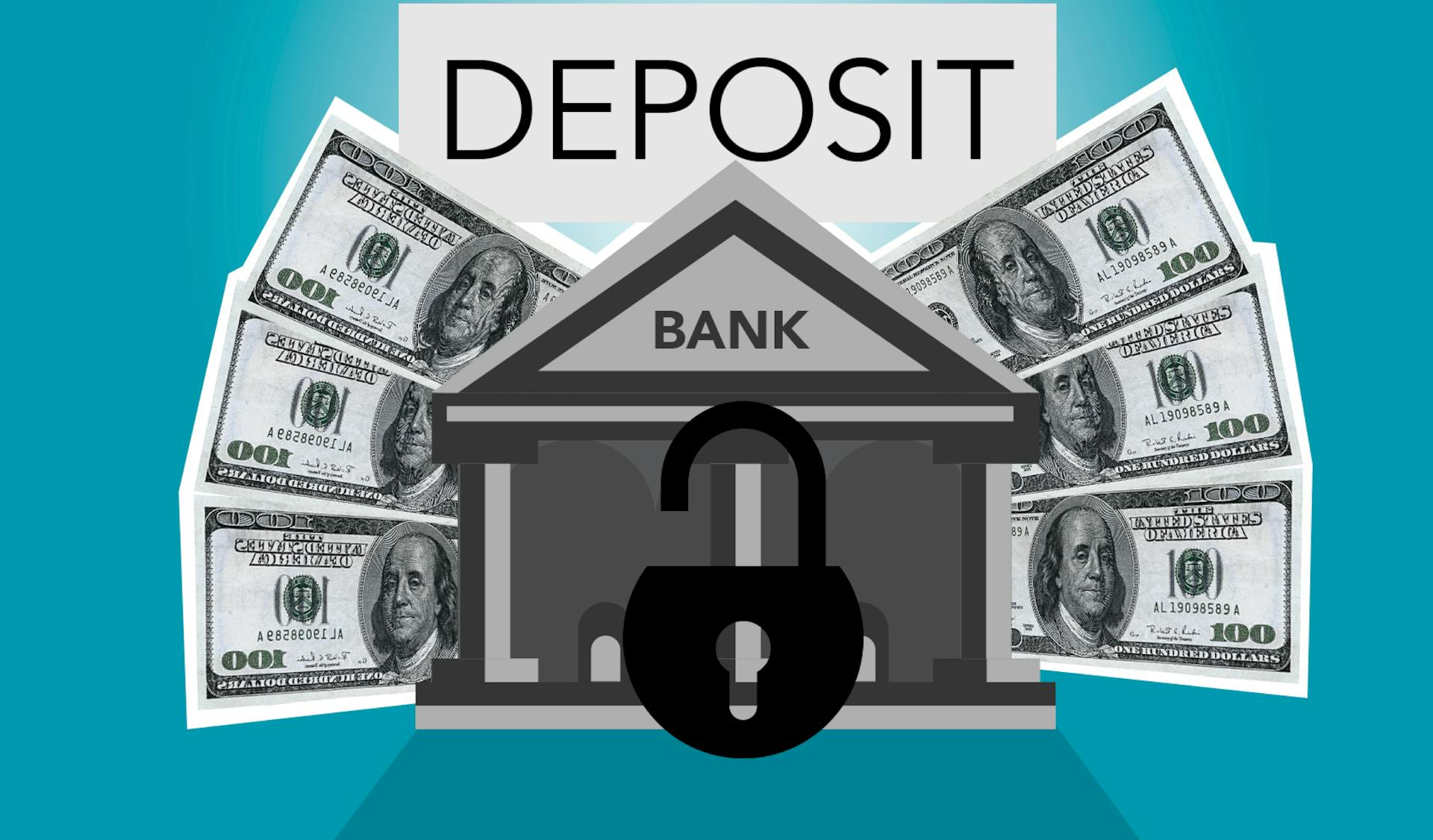
As you're getting ready to close on your new home, you might be wondering if underwriters will check your bank statements. The answer is yes, they will.
Underwriters typically require bank statements to verify the source of funds for the down payment, closing costs, and other expenses. This is a standard requirement for most home loan applications.
They'll usually review the statements for the past 60 to 90 days to ensure the funds are legitimate and not borrowed or gifted.
A fresh viewpoint: Will Lender Accept If a Friend Gift Money Conventional Loan
Verification Process
Lenders verify bank statements to ensure the borrower has sufficient funds for the down payment and closing costs. They typically ask for two of the most recent bank statements to verify the information.
The lender contacts the borrower's bank to verify the account details. This process is usually done electronically or manually, depending on the lender's preference.
Lenders may dismiss rare account overdrafts, but frequent overdrafts within two to three months before closing on a home can raise concerns about the borrower's financial stability.
Suggestion: Lender Paid Buydown

The verification process helps lenders assess the borrower's financial health, including income stability, spending habits, and savings. This information is crucial in determining mortgage eligibility.
Some lenders use digital tools like Plaid to verify bank statements, which makes the process faster, safer, and more accurate.
Lenders typically look for 2 months of bank statements from potential borrowers, which provides enough data to assess their financial situation. This can include income consistency, spending habits, account balances, and other crucial financial information.
Here's a brief overview of the verification process:
Most lenders request bank statements from the last 60 days (two months) to get a recent snapshot of the borrower's finances.
Financial Information
A lender will typically request bank statements as part of the mortgage process to verify the loan applicant's financial information.
The types of information required for verification can vary from bank to bank, but some common types include account number, account type, open or closed status, and account holder names.
Additional reading: Mortgage Fraud Examples

Account holder names are the authorized signers on the account, and lenders want to ensure they match the information provided on the loan application.
Lenders also want to verify balance information, including the current balance and average balance history over the last two statement periods.
Current interest rate and interest paid over the two most recent statement periods may also be required for verification.
If the account is a savings or certificate of deposit, lenders may ask for the length of the term, interest rate, interest paid, and any early withdrawal penalties.
Here are the specific types of financial information lenders typically verify:
- Account number
- Account type
- Open or closed status and open date
- Account holder names
- Balance information
- Current interest rate and interest paid
- Account closed date and balance (if applicable)
- Term length and interest rate (for savings or CD accounts)
Loan Approval and Overdrafts
Mortgage loan officers carefully review bank statements to assess your financial health. They look at all your financial accounts, balance information, account holders, interest information, and account transfers.
Overdrafts can significantly impact a mortgage loan application. Lenders strictly avoid any instances of overdrawing from applicants within the past year.
A fresh viewpoint: Financial Freedom Reverse Mortgage

Some lenders will deny your loan outright if they see overdrafts in the last 12 months. Others might accept overdrafts if you provide a detailed letter of explanation and proof the issue was resolved.
If you've had recent overdrafts, it's essential to be prepared to explain the situation to your lender. A good explanation can help alleviate concerns and increase your chances of approval.
Here's a summary of how lenders might view overdrafts:
Yes, overdrafts can be a red flag for lenders. It's crucial to address any overdrafts on your bank statements to avoid potential loan approval issues.
Gift Funds and Deposits
Gift funds can be a great way to boost your down payment, but underwriters need to verify they're legitimate. They'll ask for a signed gift letter from the donor, confirming the funds are a gift, not a loan.
To qualify, you and the donor must provide documentation, including a deposit slip or bank statement showing the transfer of funds. This proves the money wasn't borrowed or loaned.
A different take: Fha Gift Funds Donor Bank Statements

If you've received a large deposit, such as $10,000 from selling a secondary property, you can use it for your down payment, but you must provide the HUD settlement statement and deposit documentation. This shows the funds are legitimate and can be traced to their source.
Cash deposits are also acceptable, as long as you can prove their source. For example, if you sold a vehicle for $5,000, you can use that deposit for your down payment, as long as you provide a copy of the check, bill of sale, and title.
To avoid issues, it's essential to keep your bank statements organized and up-to-date. Underwriters will typically request two months' worth of statements, so make sure to deposit any cash into a bank account and allow it to mature for at least two months.
Here's a summary of the required documentation for gift funds:
By following these guidelines, you can ensure your gift funds are verified and approved, and you can move closer to closing on your dream home.
Common Issues and Solutions

If you've had overdrafts or bounced checks, you're not alone. Many people experience financial setbacks, but lenders view these issues as red flags. A bank's verification of deposit (VOD) can help resolve statement issues by showing the source of funds that appear in your bank statements.
To avoid problems with overdrafts, keep your account stable by avoiding overdrafts, large withdrawals, or new accounts. If you have overdrafts before the 60 days, lenders will look at the year-to-date overdraft fees (YTD Fees) column in your bank statement. If you have overdrafts in the past 12 months, you can obtain 60-day bank statement printouts from the bank, which should feature a column showing year-to-date overdraft fees.
Large withdrawals, new credit accounts, and funds from undocumented sources can also raise concerns with lenders. To avoid these issues, document any irregular deposits and provide explanations for unusual transactions. If you have any evidence of fraud, it's best to disclose this to the lender upfront, as it can make the loan process much smoother.
Related reading: Bank Statement vs Credit Card Statement
What to See

Lenders want to see a stable financial history, so avoid overdrafts, large withdrawals, or new accounts during the mortgage process. This will prevent any red flags from popping up.
Keep your account activity consistent by making regular deposits and avoiding unusual transactions.
Document any irregular deposits and provide explanations for them, and make sure to keep track of your account activity.
If you have any new accounts or large withdrawals, be prepared to explain them to your lender.
If this caught your attention, see: What Bank Makes Check Deposits Available Immediately
Solution to
If you're experiencing issues with your bank statements during the mortgage process, don't worry - there are solutions. You can avoid problems by keeping your account stable, avoiding overdrafts, large withdrawals, or new accounts. Document any irregular deposits and provide explanations for unusual transactions.
To resolve issues with overdrafts, you can obtain 60-day bank statement printouts from your bank, which should feature a column showing year-to-date overdraft fees. These printouts can be used in place of the original bank statements.

If you've had overdrafts in the past 12 months, you should wait for 60 days to allow the overdrafts to season before submitting your bank statements. This is because lenders want to see a 60-day history of stable account activity.
Irregular deposits, such as cash gifts, income from side gigs, tax refunds, or large transfers from another account, can be a concern for lenders. To address this, you'll need to explain the source of these deposits in writing and provide documentation, such as a pay stub, gift letter, or copy of a check.
Cash deposits can also be a problem if they can't be traced to a legitimate source. To use cash deposits as sourced funds, you'll need to establish a clear paper trail, such as a copy of the check, bill of sale, and title for the sold vehicle.
If you're self-employed or have inconsistent finances, you may qualify for a bank statement or asset-based loan, which doesn't require traditional income documents. This can be a good option if you're experiencing issues with your bank statements.
Here's a summary of the solutions to common issues with bank statements:
Frequently Asked Questions
How many times will underwriter ask for bank statements?
Underwriters typically request bank statements until they're satisfied with the information, which may be 2-3 times or more, depending on the loan application. This is to verify the borrower's financial history and ensure loan eligibility.
Sources
- https://www.guildmortgage.com/help-center/faqs/
- https://www.investopedia.com/ask/answers/082316/how-do-mortgage-lenders-check-and-verify-bank-statements.asp
- https://www.rocketmoney.com/learn/homeownership/what-mortgage-lenders-look-for-on-bank-statements
- https://gustancho.com/why-do-lenders-request-bank-statements/
- https://gustancho.com/how-underwriters-analyze-bank-statements/
Featured Images: pexels.com


